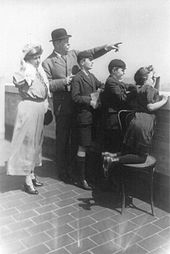Life and career
Bhatt was born in Ahmedabad, and brought up in Pune until 1968, when she emigrated to the United States with her family. She has an MFA from the University of Iowa, and for a time was writer-in-residence at the University of Victoria, Canada. She received the Commonwealth Poetry Prize (Asia) and the Alice Hunt Bartlett Award for her first collection Brunizem. [1] She received a Cholmondeley Award in 1991 and the Italian Tratti Poetry Prize in 2000. [1] Her translations from the German include Mickle Makes Muckle: poems, mini plays and short prose by Michael Augustin (Dedalus Press, 2007). Bhatt was a visiting fellow at Dickinson College, Pennsylvania and currently works as a freelance writer. She has translated Gujarati poetry into English for the Penguin Anthology of Contemporary Indian Women Poets. Combining both Gujarati and English, Bhatt writes "Indian-English rather than Anglo-Indian poetry."[2] Her poems have appeared in various journals in the United Kingdom, Ireland, the United States, and Canada, and have been widely anthologised, as well as being broadcast on British, German, and Dutch radio.
Many of Bhatt's poems have themes of love and violence. She explores issues such as racism and the interaction between Asian, European, and North American culture. Michael Schmidt observed that her "free verse is fast-moving, urgent with narratives, softly spoken. Her cadence is natural, her diction undecorated."[3] Bhatt has been recognized as a distinctive voice in contemporary poetry. She is, the New Statesman declared, "one of the finest poets alive".[4]
Bhatt now lives in Bremen, Germany with her husband, German writer Michael Augustin, and daughter.[1]Poetry collections
- 1988 Bruzinem Carcanet Press
- 1991 Monkey Shadows Carcanet Press
- 1995 The Stinking Rose Carcanet Press
- 1997 Point No Point. Carcanet Press
- 2000: Augatora. Carcanet Press
- 2002: The Colour of Solitude (Second edition). Carcanet Press
- 2008: Pure Lizard. Carcanet Press
Awards
- 1988 Commonwealth poetry prize (Asia) Brunizem
- 1988 Alice Hunt Bartlett Prize Brunizem
- 1991 Poetry Book Society Recommendation Monkey Shadows
- 1991 Cholmondeley Award
- 2000 Poetry Book Society Recommendation Aguatora
- 2000 Tratti Poetry Prize




